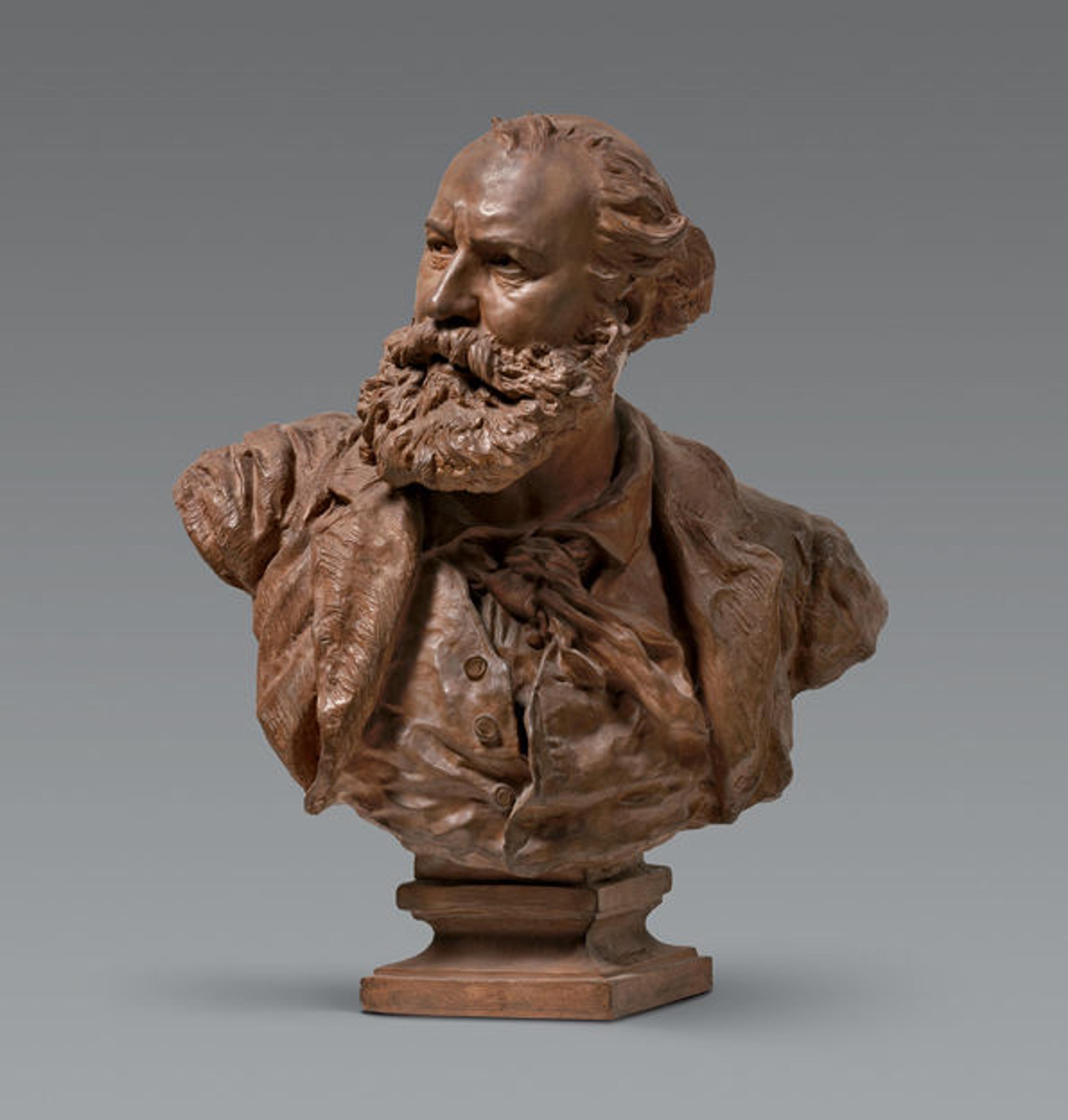Art Song in Jean-Baptiste Carpeaux's France

Jean-Baptiste Carpeaux (French, Valenciennes 1827–1875 Courbevoie). Charles Gounod, 1873. Terracotta copy; 25 x 21 1/8 x 11 3/8 in. (61.6 x 30.1 x 25.5 cm). Musée des Beaux-Arts de Valenciennes, Amélie Carpeaux; acquired by the city of Valenciennes, 1882 (S.90.6). © Photo RMN - René-Gabriel Ojéda/Thierry Le Mage. http://www.valenciennes.fr/fr/minisites/vie-active/culture/musee.html
«The mid-nineteenth century was a period of incredible stagnation for French music, especially for those composers working in the vocal arts. Only five new French operas were commissioned by the Opéra Comique in Paris between 1852 and 1870, and France had yet to forge their own style of art song, despite the widespread interest German composers had developed in the musical form earlier in the century. However, the passage of multiple revolutions and failed empires in the mid-nineteenth century gave French artists across all disciplines a spectrum of intense emotions to convey, and the wealth of art song in the country quickly began to accumulate.»
In conjunction with the exhibition The Passions of Jean-Baptiste Carpeaux, Met Museum Presents' Sculpting Sound: The Music of Carpeaux's Circle offers an in-depth survey into the French art song, and will feature mezzo-soprano Susan Graham along with rising stars Layla Claire and Evan Hughes, accompanied by the current director of the Juilliard Vocal Arts Department, Brian Zeger. This rare opportunity to hear Graham—known especially for her superlative interpretations of the French repertoire—in an intimate setting such as the Grace Rainey Rogers Auditorium will showcase the diverse efforts of composers contemporary to Carpeaux, including Charles Gounod, Georges Bizet, Camille Saint-Saëns, and Gabriel Fauré.
As Carpeaux sought to heighten the expressive qualities of classic sculptural forms, so were composers of his time looking to imbue exotic attributes into their vocal music. Like Carpeaux—who was steeped in the academic traditions and studied in Rome between 1856 and 1862 as a winner of the Grand Prix de Rome—Gounod, Bizet, and Saint-Saëns were also winners of the analogous musical prize from their scholarly institutions in Paris. Especially in the case of Gounod, Rome proved to be a city of inspiration, where the composer was able to study the ecclesiastical music of the sixteenth-century that further defined his interest in the vocal arts. Once Gounod rose to fame with the premiere production of his opera Faust at the Théâtre Lyrique, the composer's style became synonymous with melodic grace, sentimentalism, and idiomatic phrasing—all artistic traits that could be similarly accounted for in Carpeaux's work. (The two became well acquainted while exiled in London during the Franco-Prussian War, where upon completion of Carpeaux's bust of Gounod, the composer proclaimed it "a masterpiece" and ordered several additional copies.)
The missing element in the French composers' abilities to further develop their country's body of art song was a similar lack of popular French poetry at the time. Whereas Schubert was able to work with the expansive output of Johann Wolfgang von Goethe (the French libretto Gounod used for his opera was based directly on Goethe's drama), the French were more limited with their source material, with no single author accountable for a large body of work. In fact, out of the twenty-two songs to be performed on Sculpting Sound, fifteen authors are represented among the texts, with Victor Hugo alone providing text for only six of the songs.
Thankfully the rise of the Symbolist poets during the late nineteenth century would give composers the kind of textual renaissance they needed in order to enhance the art song in France. Not only did the monumental works of Charles Baudelaire, Stéphane Mallarmé, Paul Verlaine, and Arthur Rimbaud prove instrumental in the art-song output of Fauré, Ernest Chausson, and Claude Debussy, but their popularity also served the work of twentieth-century composers outside of France—including Benjamin Britten and Dmitri Shostakovich, who used texts of these French poets in large-scale song cycles and even symphonies. By the end of the century there was a body of French song produced that is still celebrated by critics and audiences alike today, filled with the bold, sensuous expressions that are vivid and worldly yet distinctly French in character.

Clockwise from top: Susan Graham © B. Ealovega; Evan Hughes © Matthu Placek; Layla Claire © Kristin Hoebermann
Purchase Tickets
Sculpting Sound: The Music of Carpeaux's Circle will take place on Saturday, April 26, at 7:00 p.m.
Michael Cirigliano
Michael Cirigliano II is the managing editor in the Digital Department.